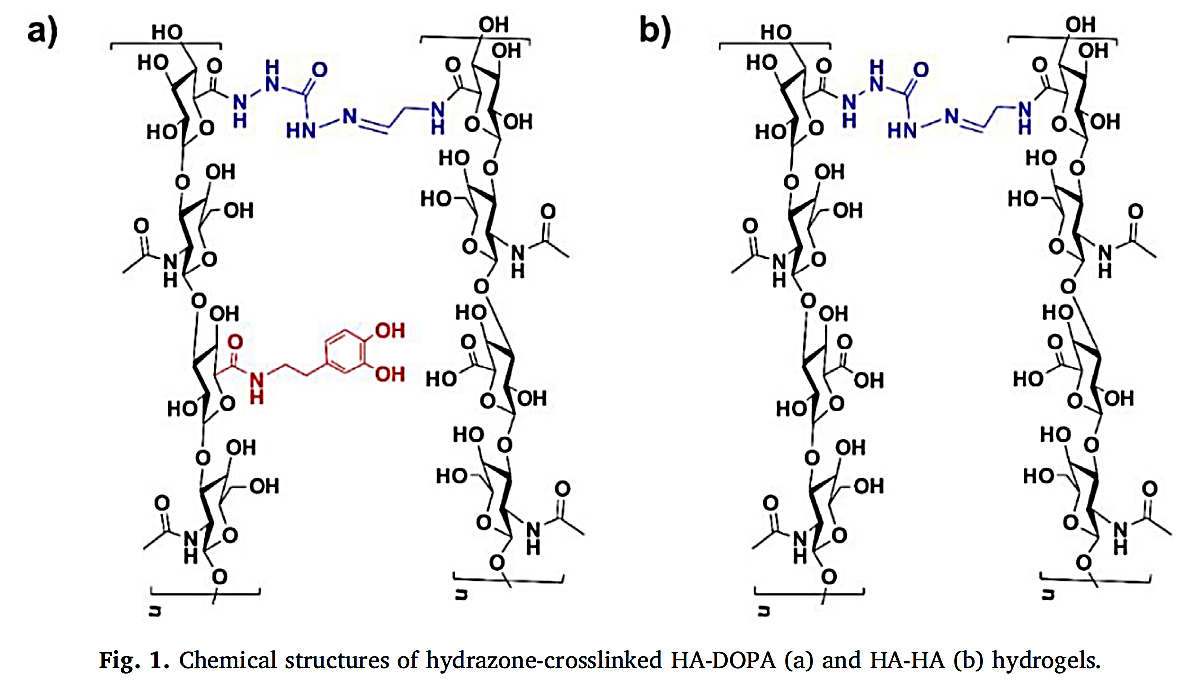
- Koivusalo, et al. Biomaterials 225 (2019) 119516
严重受损的角膜的再生需要递送上皮更新性角膜缘上皮干细胞(LESC)和基质修复细胞,例如人脂肪来源的干细胞(hASC)。当前,存在以组织样细胞组织递送这些治疗性细胞的有限策略。随着与缝合角膜植入物有关的额外风险,迫切需要开发用于角膜再生的新的组织粘附生物材料。
坦佩雷大学Heli Skottman教授团队致力于水凝胶修复与干细胞治疗,为了解决这些问题,将多巴胺部分嫁接到交联的透明质酸(HA-DOPA)水凝胶中,以赋予组织粘合特性并促进凝胶与基底膜蛋白或肽的共价表面修饰。通过将hASCs封装在水凝胶中,随后将硫醇化的胶原IV或层粘连蛋白肽缀合在一起,并在水凝胶表面植入LESC,在植入物中实现了组织样的细胞分隔。HA-DOPA凝胶中封装的hASCs表现出良好的增殖和细胞伸长,而LESCs表达典型的角膜缘上皮祖细胞标记。重要的是,分隔的HA-DOPA植入物在猪角膜器官培养模型中植入后显示出出色的组织粘附性。 这些结果鼓励功能性干细胞的无缝合植入作为下一代角膜再生。
The regeneration of a severely damaged cornea requires the delivery of epithelial renewing limbal epithelial stem cells (LESC) and stromal repair cells, such as human adipose-derived stem cells (hASC). Currently, there are limited strategies for delivering these therapeutic cells in tissue-like cell tissue. With the additional risks associated with suturing corneal implants, there is an urgent need to develop new tissue adherent biomaterials for corneal regeneration.
The team of Professor Heli Skottman from the University of Tampere is committed to hydrogel repair and stem cell therapy. In order to solve these problems, dopamine is partially grafted into cross-linked hyaluronic acid (HA-DOPA) hydrogel to give tissue adhesive properties and promote the covalent surface modification of gel and basement membrane protein or peptide. By encapsulating hASCs in a hydrogel, then conjugating thiolated collagen IV or laminin peptides together, and implanting LESC on the surface of the hydrogel, tissue-like cell separation is achieved in the implant. HASCs encapsulated in HA-DOPA gel showed good proliferation and cell elongation, while LESCs expressed typical limbal epithelial progenitor cell markers. Importantly, the divided HA-DOPA implants showed excellent tissue adhesion after implantation in the porcine corneal organ culture model. These results encourage seamless implantation of functional stem cells as the next generation of corneal regeneration.
https://doi.org/10.1016/j.biomaterials.2019.119516
李建超